As temperatures soared to 128 degrees, Death Valley National Park rangers received calls: Six motorcyclists stranded. All available medical personnel attended the scene and rangers dispatched two of the park’s ambulances.
Death Valley National Park emergency medical coordinator Spencer Solomon said it was an “all-hands-on-deck emergency call.” The superheated air was too thin for emergency helicopters to respond, but rescue teams called in nearby fire stations for mutual aid.
They arrived on Saturday to find a motorcyclist unconscious and paramedics unsuccessfully trying to resuscitate him. Another unconscious rider was loaded into an ambulance, where emergency medical technicians tried to quickly cool the victim with ice and rushed him to an intensive care unit in Las Vegas. The other four motorcyclists were treated at the scene and released.
California and much of the West have been experiencing record high temperatures recently, with temperatures in Death Valley reaching at least 125 degrees every day since July 4, and that may not change until the weekend, according to the National Weather Service.
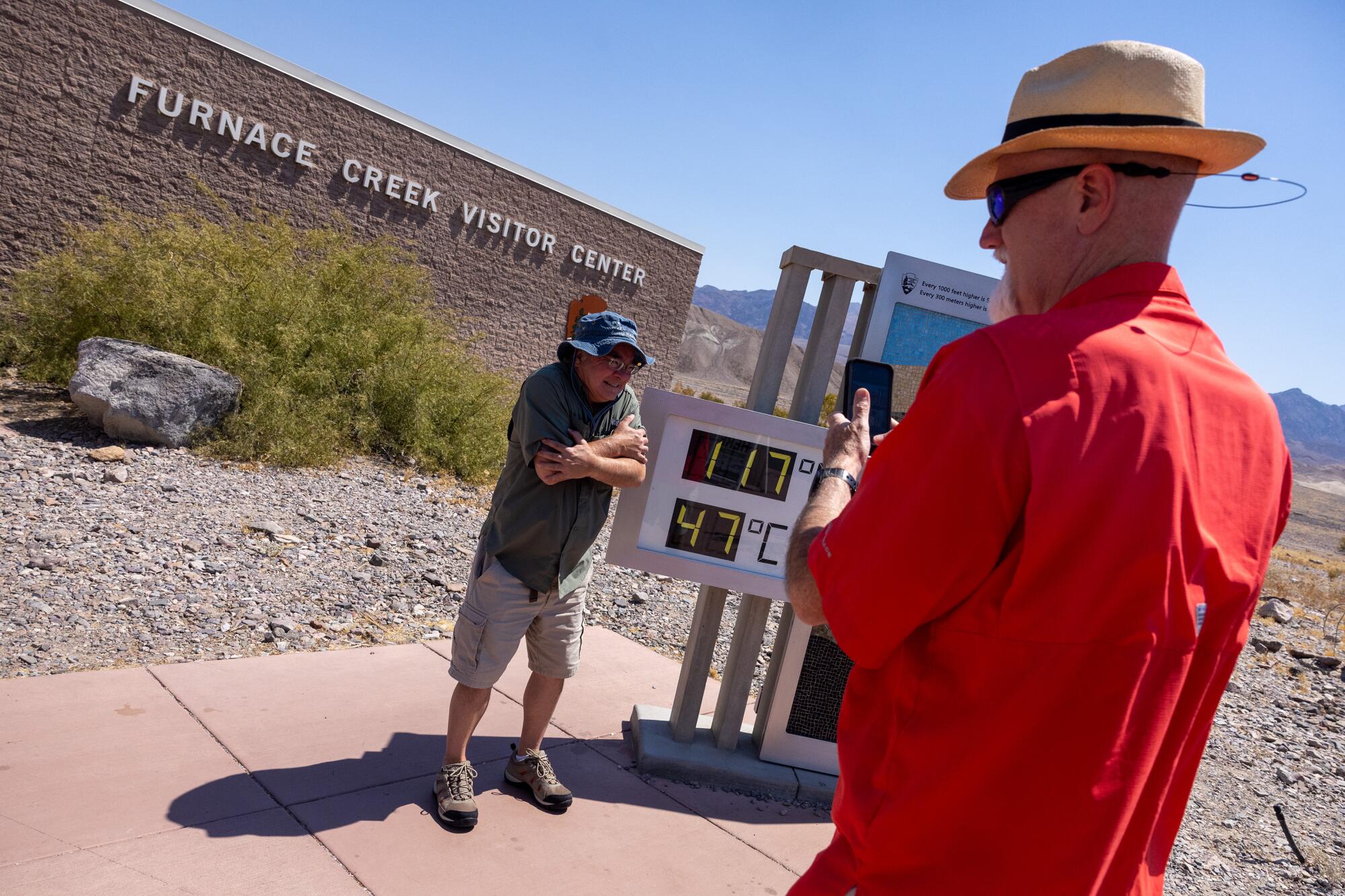
Visitor Dave Hsu (left) pretends to be cold as friend Tom Blake takes a photo in front of a digital thermometer at the Furnace Creek Visitor Center.
Heat is both one of Death Valley’s biggest problems and its most serious safety issue. It’s not uncommon for someone to die from heatstroke in the park each summer.
The valley lies 200 feet below sea level and is surrounded by steep, towering mountains that trap heat and remains one of the hottest places on Earth.
During the summer, international travelers often plan their trips without considering the weather. (The six men who encountered extreme temperatures near Badwater Basin on Saturday were all from Germany.)
But even Southern California residents familiar with Death Valley’s hellish reputation make the trek to the park just to experience the otherworldly heat.
“In Los Angeles, people are saying, ‘No, don’t go out; you’re crazy,'” said Nick Van Schaick, who visited the park earlier this week. He spent the night in the nearby town of Beatty, Nevada, before driving into the park at dawn on Tuesday. “I don’t know. … There’s something striking about this landscape.
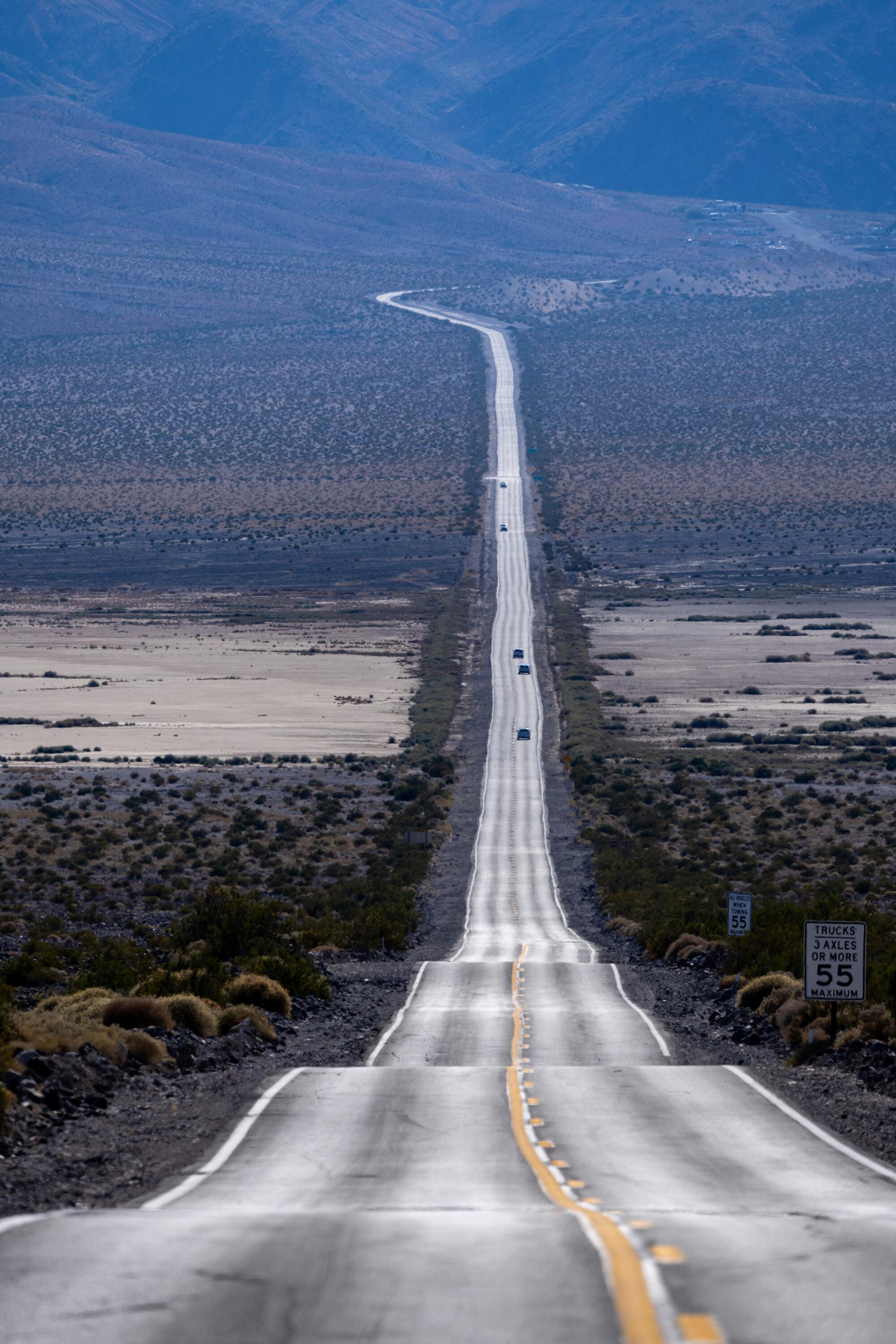
Visitors to Death Valley National Park drive in and out of the park along Highway 190, passing through the Panamint Valley, where temperatures recently reached 125 degrees.
Experts say nearly all heat-related deaths are preventable, but what makes heat so dangerous is that it creeps up on its victims.
The risks of Death Valley’s heat seem obvious. It’s hard to miss the dozens of “Death from Heat” signs throughout the park, and getting off there for the first time feels like sticking your face into an open oven. Within seconds, your eyes begin to burn and your lips split. Your skin feels completely dry—even if you sweat profusely, the sweat evaporates almost instantly.
But when people’s core body temperatures begin to rise, one of the first symptoms that appears is confusion, which inhibits a person’s ability to recognize a problem or figure out how to save themselves.
Research also shows While almost everyone knows how to prevent heat stroke, few take action to protect themselves. Part of the reason is that many people think they have unique abilities to tolerate heat, but that’s not actually the case. In 2021, a Death Valley tourist died from heatstroke, days after another tourist died on the same route.
It’s a one-two punch. Bill Hansen, an instructor with the International Wilderness Medical Association and a flight paramedic in Central Texas who specializes in heat-related emergencies, said hikers ignore symptoms of heat exhaustion because they are excited about the hike or have nowhere to go. go. Then, “when a person reaches a state of fairly severe heat exhaustion — which is not a fatal condition in itself — and they’re still in that environment, the likelihood that they’ll make the right decision and reverse the process… is The decrease is due to a decrease in their ability to make good decisions.
One of the reasons humans are so quickly plagued by extreme heat is that heat has only one way out of the body. Blood carries heat from our core to our skin, and when the breeze is too hot to carry the heat away, the body can only release heat through the evaporation of sweat. Any sweat that drips onto the floor or is wiped off your face is a missed opportunity to cool down.
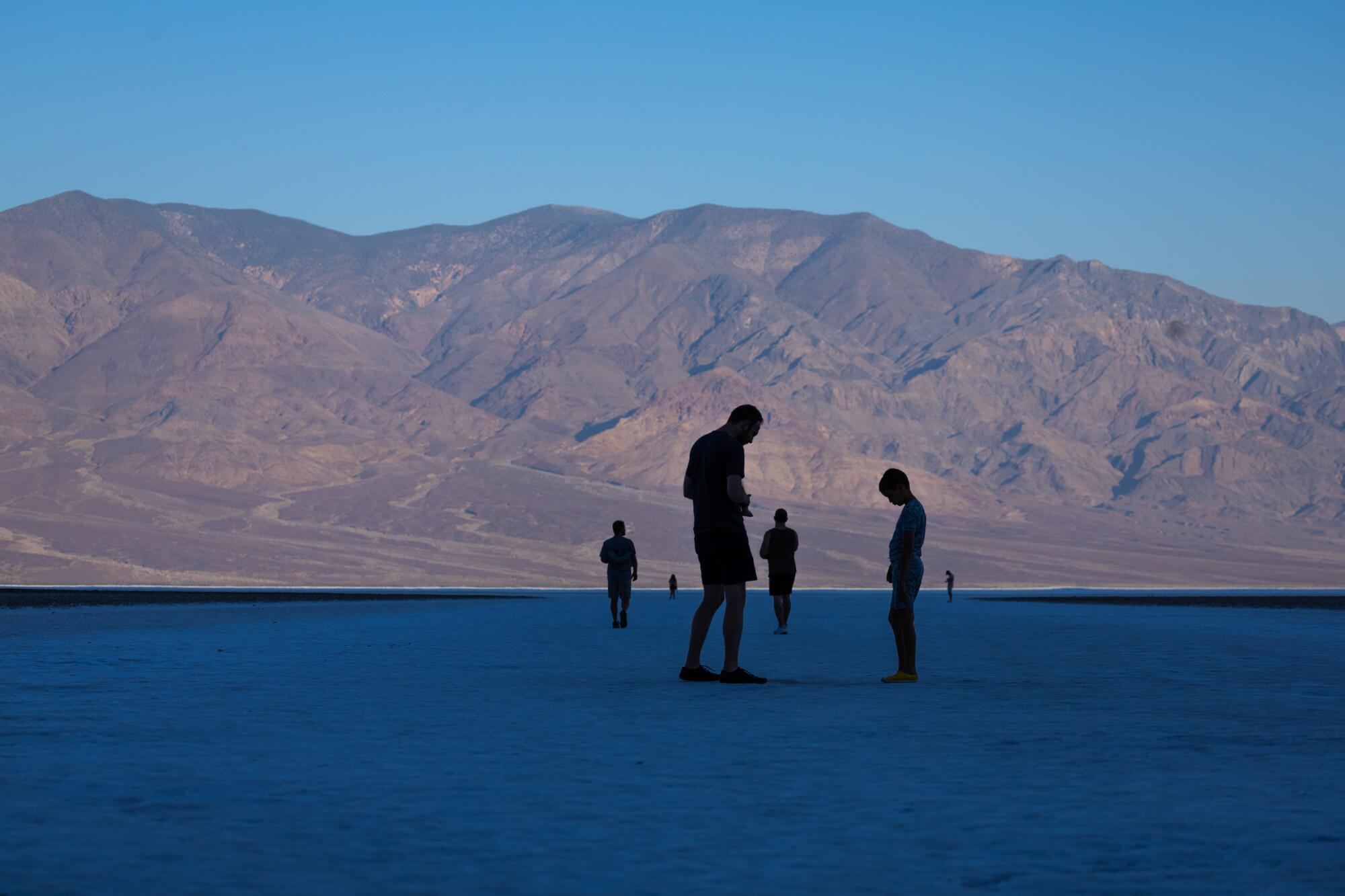
Temperatures in Death Valley National Park can reach as high as 125 degrees, and visitors can take advantage of cooler morning temperatures to hike to the salt flats of Badwater Basin.
In Death Valley, the air is very dry and sweat evaporates easily, unlike humid climates where the atmosphere contains more moisture. However, dehydration can occur quickly after heavy sweating. The park recommends that visitors try to replenish lost fluids and drink at least a gallon of water per day if they spend time outdoors doing any physical activity.
But sweating and constant hydration can only go so far.
“In a 130-degree environment…without some technical support, the human body’s ability to survive in that environment is going to be limited,” Hansen said.
As a result, the park says never hike after 10 a.m. during periods of extreme heat and recommends not leaving the nearest air conditioner for more than five minutes, whether in a car or a building.
In hot weather, collective action can save lives. While a confused fever victim may have difficulty recognizing symptoms or remembering how to help himself, a friend can spot the problem. In general, if you have difficulty physically or mentally doing anything that normally comes easily to you, stop taking a break immediately and seek cooler conditions.
Muscle cramps are often the first sign that the body is having trouble keeping cool. They can be caused by dehydration, muscle fatigue and a lack of electrolytes like sodium, which is essential for transporting water and nutrients throughout the body. Cramps are a sign that the body’s process of removing heat is under stress.
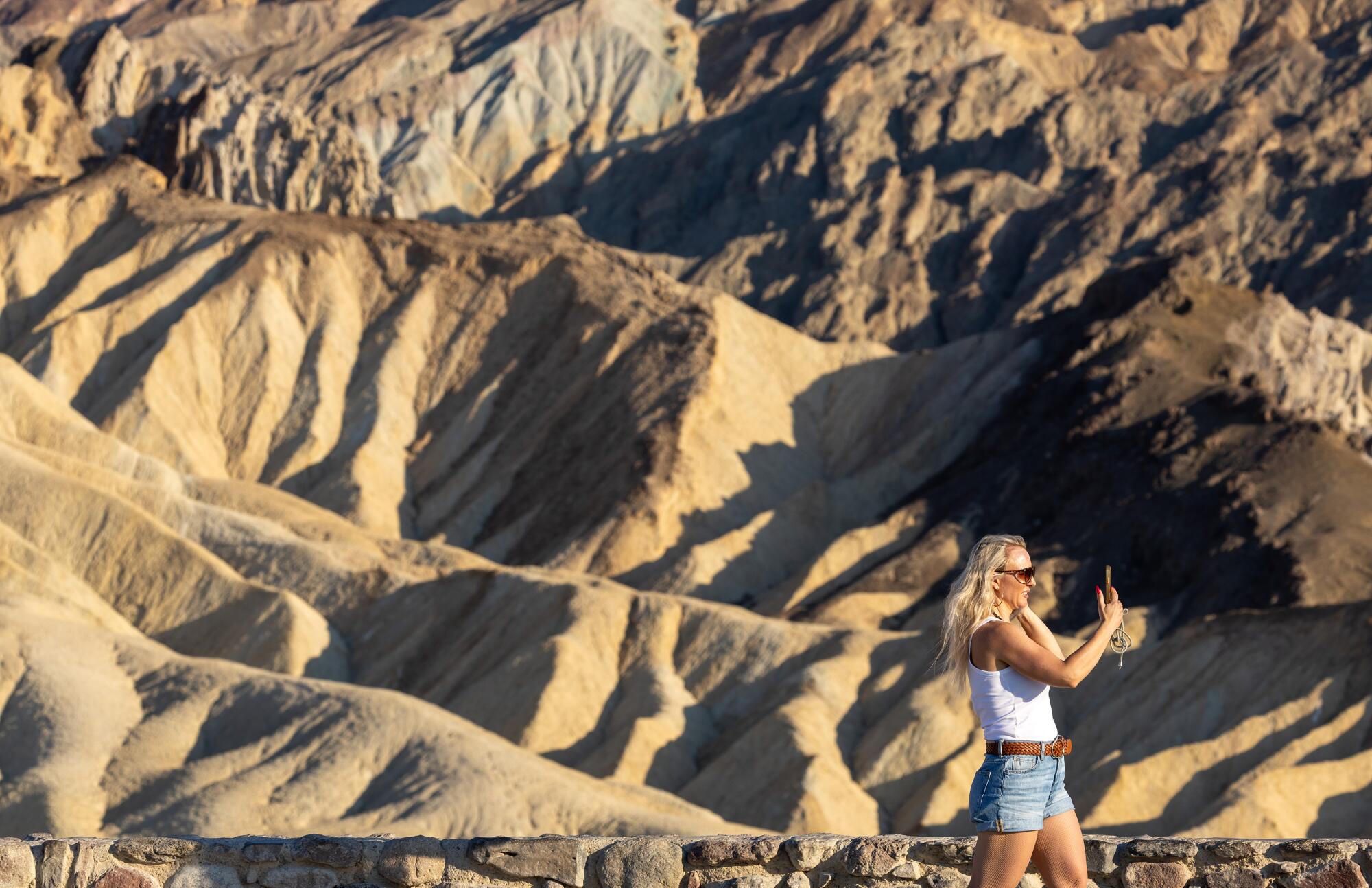
Steffi Meister, a Death Valley National Park visitor from Switzerland, photographed the scenery at Zabriskie Point, where temperatures recently reached 125 degrees.
As the body struggles, heat stroke sets in. When the body temperature exceeds 101 degrees, the victim will begin to experience dizziness, confusion, and headaches. It is not uncommon for them to vomit, feel weak, or even faint.
When the body temperature exceeds 104 degrees, the entire central nervous system (which is responsible for regulating heat in the first place) can no longer withstand the stress of high temperatures. It starts to close. Victims may become so confused and disoriented that they no longer make sense. They may not even be able to communicate. They may start having seizures and slip into a coma.
“To me, as a park medic, if you’re unresponsive, you’re going to the hospital,” Solomon said, “because your brain is essentially cooking.”
By this time, the heat has caused irreversible damage that may leave the victim disabled for years to come. If the internal temperature does not drop quickly, death is very likely. Even if a victim’s body temperature begins to drop, organs can fail within hours, killing the victim.
Heat stroke may occur within minutes or may take hours to occur. “There’s a weird phenomenon where twice a day we get 911 calls from people who are sick with heatstroke,” Solomon said.
One of them is in the afternoon, when the weather is hottest. Another time is around 11pm – daytime visitors will feel fine but become increasingly dehydrated as they continue to exert themselves. “Then they checked into a hotel room and got sick,” Solomon said.
In some extreme cases, heat stroke can cause a person to collapse so quickly that muscle cramps and other symptoms of heat exhaustion don’t have time to manifest. During the summer, Death Valley emergency teams typically receive about two to three fever calls a week, with visitors experiencing symptoms ranging from mild fatigue to loss of consciousness.
Heat stroke experts overwhelmingly agree on the most effective treatment: cooling the patient as quickly as possible.
“The key to survival is keeping your body temperature below 104 degrees within 30 minutes of onset of illness,” said Douglas Casa, professor of kinesiology at the University of Connecticut and executive director of the Corey Stringer Institute. “Treat heat stroke. “If you do that, you have a 100 percent survival rate, which is amazing because there aren’t a lot of life-threatening emergencies in the world that, if handled properly, have a 100 percent survival rate.”
Experts say the fastest way to cool down a patient is a cold ice bath. Hansen said his team in Texas would fly in a helicopter, give victims ice baths and cool them in the middle of the desert until their temperatures stabilized before medical personnel transported them out.
In Death Valley, however, providing ice baths to victims is nearly impossible. The hot air was so thin that the team couldn’t fly the helicopter. Instead, they bring a body bag and use ice and cold towels inside to cool the victim while the ambulance transports him.
While emergencies are common, the park says they are preventable and people can experience the heat safely if they follow the park’s guidance.
“That’s really a reason some people come to visit because it’s one of the few places on Earth where you can feel this kind of heat,” said park ranger Jennette Jurado. “As a “Our job as park rangers is to do our best to make sure people can have these experiences and then go home safe and remember them at the end of the day.”
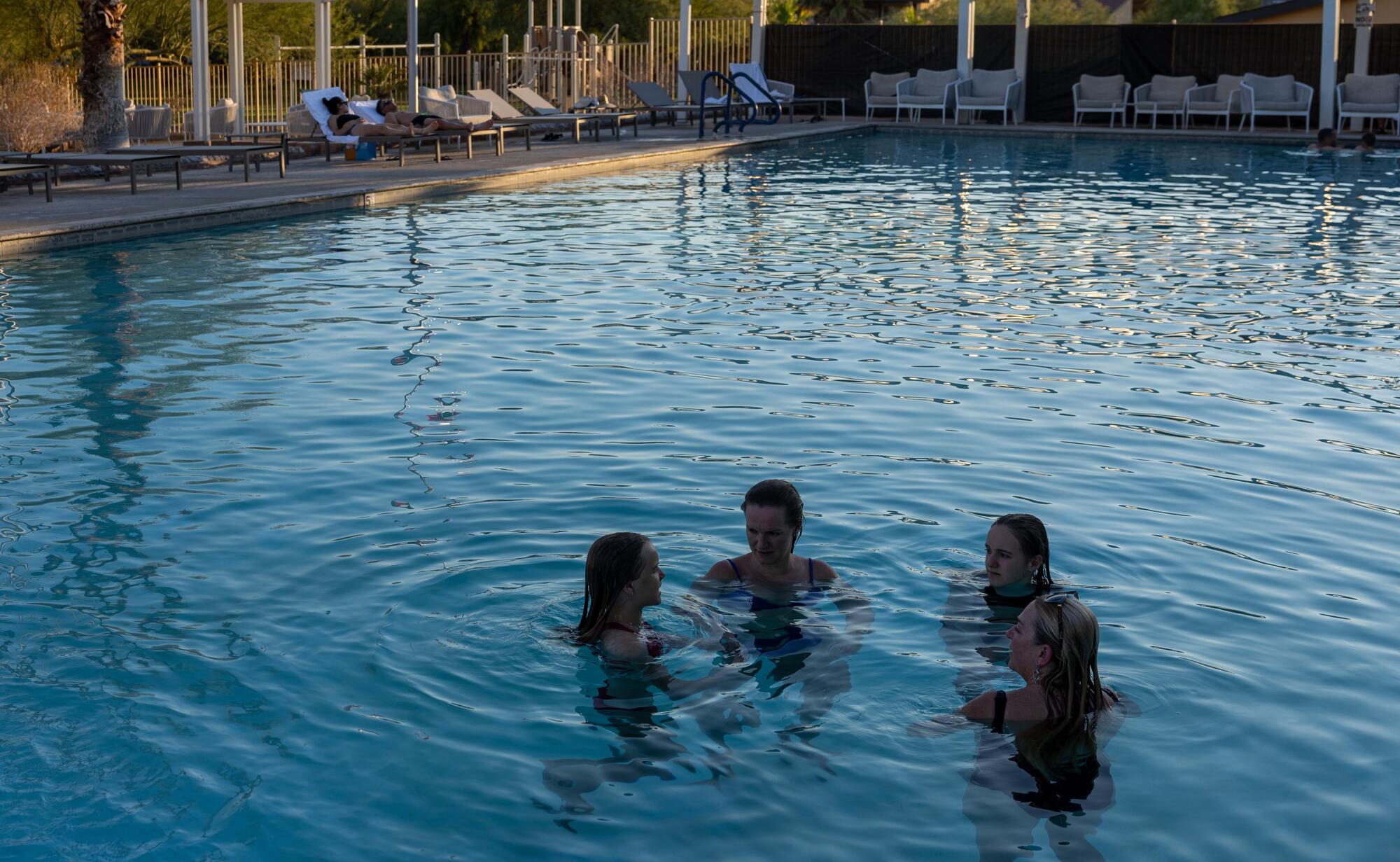
Visitors swam in the Furnace Creek pool in Death Valley National Park in the afternoon, where the temperature hovered around 120 degrees Fahrenheit.
For Jurado, a safe visit is like hiding in the air conditioner during the hottest part of the day, feeling the heat every five minutes. The vast majority of tourists take this approach. If they do go hiking, it’s early in the morning and the car is never out of their sight. For the rest of the day, they hang out at restaurants or pools, or leave the park.
While someone might falsely convince themselves that a 90-degree heat wave in the city won’t affect them personally, that’s much harder to do in a Death Valley heat wave.
Ironically, this makes Jurado even more worried about cooler days in the park, when visitors may not be most alert. A few years ago, when hikers died within days of each other, the temperature in the park was unusually cool, reaching 105 degrees.
“In this heat, people say, ‘Oh, Death Valley isn’t hot, I can hike longer, I can take more risks,'” Jurado said.

